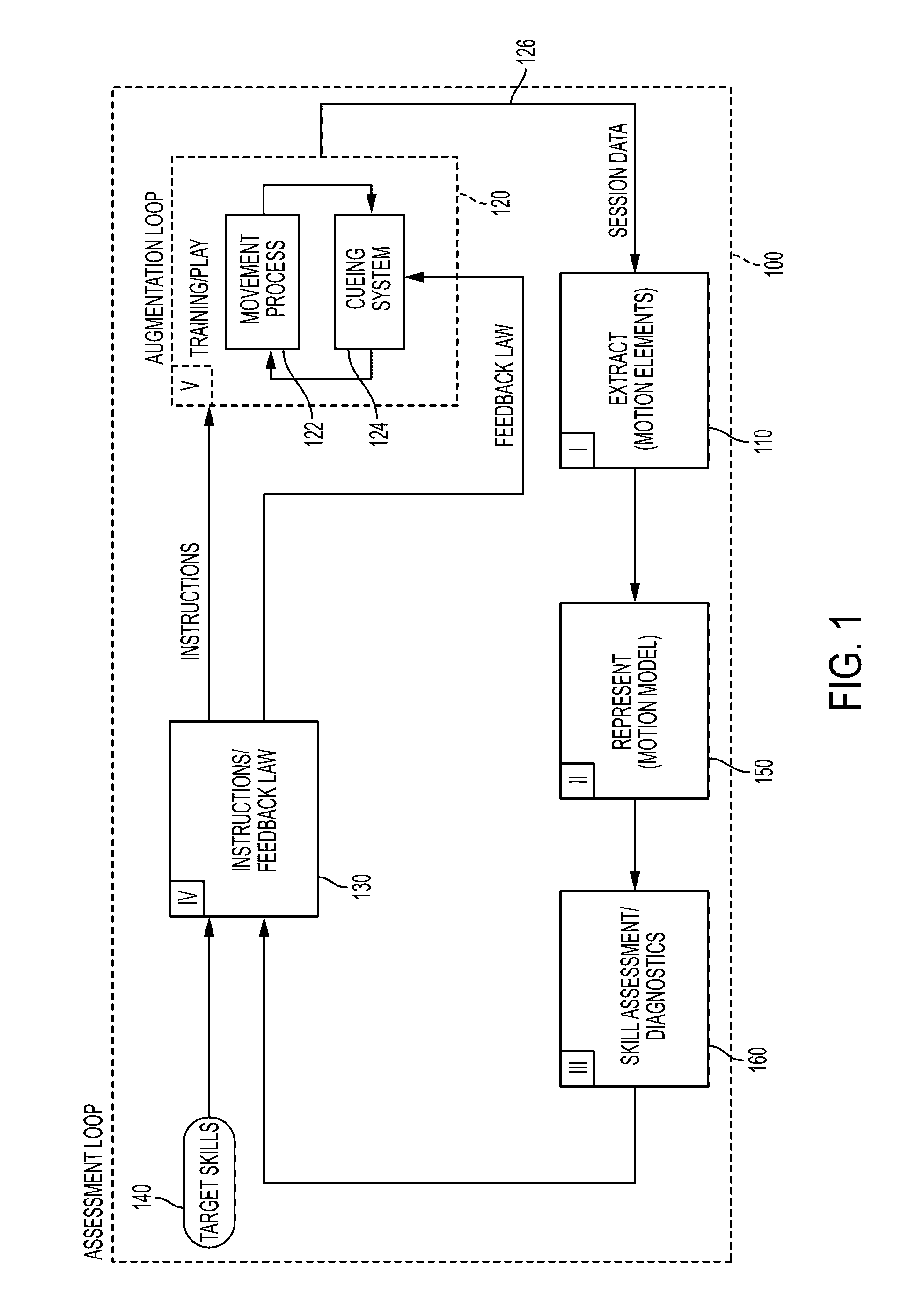System for movement skill analysis and skill augmentation and cueing
a technology of movement skill and analysis method, applied in the field of system and method of movement skill analysis, movement skill augmentation and movement cueing, can solve the problems of complex and challenging tasks, inability to detect movements, and often unfold too quickly to achieve the effect of accelerating complex movement skill acquisition, reducing injuries and wear, and improving outcome and performan
- Summary
- Abstract
- Description
- Claims
- Application Information
AI Technical Summary
Benefits of technology
Problems solved by technology
Method used
Image
Examples
examples
A. Tennis
[0316]The tennis processing follows the organization provided in FIG. 9 and the overall operation is divided between the assessment and the augmentation loops. The data processing for the assessment loop is done on an as-needed basis. Once the motion data has been aggregated, processed, organized into distinct classes and segmented into phases, the information is incorporated in the motion model 950. This model is used to assess and diagnose the individual's technique and skills and ultimately synthesize the instructions and feedback augmentations 930. The former are delivered to the user using a communication system (see 621 in FIG. 6) via a host such as a smart phone or smartwatch. The latter are delivered to the user via the cueing system 622.
[0317]The example is used to demonstrate how the processes and analysis techniques using motion data collected from the IMU device 1830 attached to a tennis racket (see FIG. 18A).
[0318]For the tennis example, the motion sensors are ...
PUM
 Login to View More
Login to View More Abstract
Description
Claims
Application Information
 Login to View More
Login to View More - R&D
- Intellectual Property
- Life Sciences
- Materials
- Tech Scout
- Unparalleled Data Quality
- Higher Quality Content
- 60% Fewer Hallucinations
Browse by: Latest US Patents, China's latest patents, Technical Efficacy Thesaurus, Application Domain, Technology Topic, Popular Technical Reports.
© 2025 PatSnap. All rights reserved.Legal|Privacy policy|Modern Slavery Act Transparency Statement|Sitemap|About US| Contact US: help@patsnap.com



